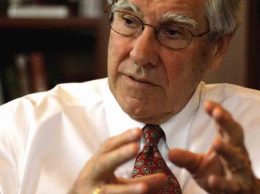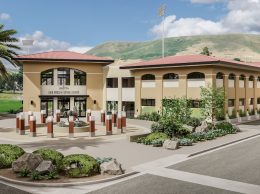CSU agrees to faculty salary increases, averts strike
The California State University system and its faculty narrowly averted the largest strike in the history of U.S. higher education, when the two sides announced an agreement April 8 for across-the-board raises over the next two years.
If the CSU trustees and the California Faculty Association’s full membership approve the contract extension, all 26,000 faculty members will get raises of 7 percent for the 2016-17 school year and 3.5 percent for 2017-18. Some faculty members, who make less than the market rate for their positions, will also get a 2.65 percent raise in 2017-18.
Last fall, the California Faculty Association voted to authorize a strike if its demand for 5 percent raises was not met, and the union had set a date of April 13-19 for a weeklong strike at all 23 CSU campuses. (Full disclosure: my wife is a professor at CSU Northridge and a non-voting CFA member.)
The administration had offered 2 percent raises and did not budge from that position until just a few weeks before the scheduled strike. Finally, after six months at impasse, the bargaining teams started meeting again in early April. This time, CSU Chancellor Timothy White appeared at the bargaining table.
“Having the chancellor and some of the trustees in the room to listen to our concerns really helped facilitate the process,” CFA President Jennifer Eagan, a professor at CSU East Bay in Hayward, said during an April 8 news conference to announce the deal. “That line of communication is one we will keep open and will hopefully keep future conflicts from building.”
The release on March 28 of an independent fact-finding report may have played a role in bringing the CSU back to the table. Under state law, once the sides reached impasse, they took their dispute to a fact-finding panel consisting of one CFA member, one administration representative and a neutral third party. In practice, that means the third party — in this case, labor mediator Bonnie Prouty Castrey — is the fact-finder.
Castrey sided with the union on every important aspect of her report, recommending that the CSU give 5 percent raises to all faculty, the first significant raises in a decade.
The fact-finder’s report was non-binding, but the point was to get the sides back to the table and perhaps push them toward the fact-finder’s recommendations. Both of those things happened shortly after the report went public.
But at the time the report was released, the two sides hadn’t talked for months. Kevin Wehr, a professor at CSU Sacramento and the chairman of the union bargaining team, said at the time that he didn’t “see any chance” for a resolution before the April 13 planned strike.
The CSU has never had a system-wide strike. As the largest university system in the country, with about 460,000 students, any systemwide strike would have been the largest higher education strike in U.S. history.
Perhaps the most encouraging thing about the deal is the fact that it extends the current CFA contract by a year, through June 2018. If that hadn’t happened, the salary dispute could have arisen again a little over a year from now.
There are still longer-term concerns in the CSU system. The CFA has a vision of a more inclusive, affordable CSU, with more spaces for high school graduates and perhaps the free tuition the university used to offer.
Even without the new faculty raises, that would require major increases in state funding. With a professoriate that’s paid significantly more than it is now, the system might need a whole new funding model.
“It’s part of a conversation we should start having in California, as concerned citizens,” Wehr said, in an interview conducted before the tentative agreement was reached. “There is a conversation to be had about our priorities as a state.”
• Contact Tony Biasotti at [email protected].












